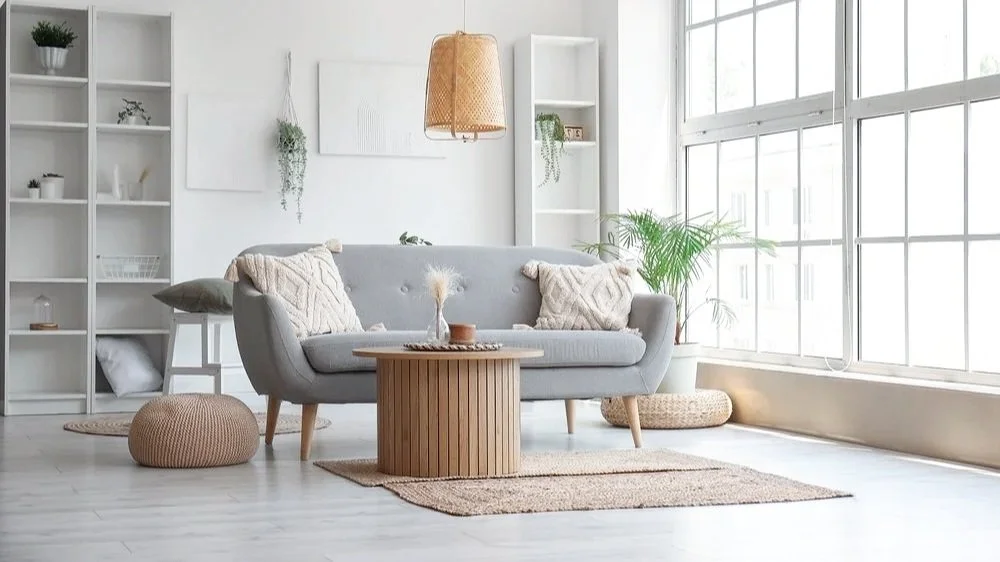Top 10 Painting FAQs from NYC Home Owners
Thinking of painting your NYC apartment or brownstone?
New York has its own nuances and rules that renters, homeowners, and contractors have to follow - from permits to lead paint safety. These are the top 10 most common questions home owners ask when it comes to painting an apartment, condo/co-op, or home in New York City.
Here’s the thing to remember - painting a home isn’t just about color — it’s about timing, logistics, and understanding the unique quirks of living in an older (and evolving) city like New York.
From navigating building regulations to ensuring lead-safe practices in pre-war apartments, NYC homeowners have a lot of smart questions before starting a project. We hear these questions all the time from our clients — and we’re here with answers that help you feel informed, confident, and ready to refresh your space.
Let’s start with the MOST common:
What’s the cost to paint your home in NYC?
Painting costs in New York City vary depending on your apartment’s size, ceiling height, wall condition, and paint type. On average:
Studio or 1BR: $1,200–$2,000
2BR: $2,000–$3,500
3BR and up: $3,500+
These ranges typically include labor, materials, prep work, and two coats of premium, low-VOC paint. Undertone Interiors offers transparent, flat-rate estimates so you know exactly what to expect before we start.
2. How long does it take to paint a NYC apartment?
For most NYC homes, interior painting can be completed in 1–3 days, depending on scope. A single room can often be finished in one day, while full apartments take two to three days. Timing is especially important when you’re moving in or out — and our team is used to working efficiently around real-estate deadlines.
3. Do I need a permit to paint my apartment?
Generally, you do not need a city permit for standard interior painting. However:
Co-ops and condos often require management approval or proof of insurance from your contractor. This is often referred to as a COI - or Certificate of Insurance, and any reputable painter or contractor can supply one.
Historic buildings may have additional guidelines about renovation or changes.
Exterior painting can require permits if scaffolding or façade access is needed.
FYI, we handle all the building paperwork and COI requirements so you don’t have to.
4. I live in an old building - do I need to worry about lead paint?
If your home was built before 1978, there’s a strong chance it contains lead-based paint. NYC Local Law 1 requires landlords and contractors to follow lead-safe work practices when disturbing old paint. Our crews are EPA-certified for lead-safe renovation, meaning we use proper containment, HEPA filtration, and cleanup procedures to keep your home safe.
Any good painter will prioritize the health and safety of both their clients AND their crew - and often in NYC that means hiring a specialist for lead paint removal.
5. What kind of paint should I use for my home?
Older buildings and small spaces can significantly impact the air quality of your home - and that’s something to keep in mind when choosing the right interior paint. We always recommend low- or zero-VOC paints to minimize odor and improve indoor air quality — ideal for smaller, sealed spaces.
Popular options include:
Benjamin Moore Natura or Regal Select
Sherwin-Williams ProMar, EcoSelect, or Emerald
Alkemis Paint (one of the only Cradle to Cradle Certified wellness paint brands)
Ecos Paints / Clare Paint (two eco-friendly and designer-curated brands)
6. Will the painters move my furniture?
Yes — professional painters should always protect your home, and that includes:
Moving and covering all furniture
Floor protection and taping
Daily cleanup and careful return of items
Given that many of our clients in NYC work from home, we offer our clients a “Quiet Jobsite Pledge”, which ensures minimal disruption, noise, and fast-turnaround.
7. How should I prepare before painters arrive?
Painters will inform you ahead of time what you can do to help prepare for painting and ensure a fast, seamless process. This usually includes tasks like:
Removing small items and wall art
Clearing surfaces like dressers or countertops
Letting us know about any wall damage or repairs needed
Coordinating building access and elevator use
Once that’s done, we take care of everything else.
8. Can you paint over wallpaper?
In some cases, yes — but it depends on the wallpaper’s condition. If it’s smooth and well-adhered, it can be primed and painted. If it’s peeling or bubbling, it’s best to remove it first.
A good painter evaluates each wall and advises on the cleanest, most durable option for your space. In most cases, they’ll probably recommend removing the wallpaper altogether for the best finish, particularly if it’s limited to a small area of the home.
9. Do I need to leave my home while it’s being painted?
With low-odor, no-VOC paints, you typically don’t need to vacate your home. However, if you’re especially sensitive to smells or have a large multi-room project, it can be more comfortable to step out for part of the day. It’s also possible to schedule the project in sections to minimize inconvenience and accommodate the homeowner.
10. How often should I repaint my home?
On average, interiors should be repainted every 5–7 years, or sooner in high-traffic areas. NYC’s humidity and heating can cause subtle fading or cracking over time. Repainting refreshes your space, seals walls against moisture, and gives your home a crisp, polished finish.
In Summary
Painting in New York City involves a few extra layers of planning — but with the right team, it’s a seamless process.
Whether you’re moving, refreshing, or preparing your home for sale, Undertone Interiors brings design-savvy expertise, precision craftsmanship, and eco-conscious materials to every project.
Ready to get started? Contact us to scheduled a free in-home estimate.


